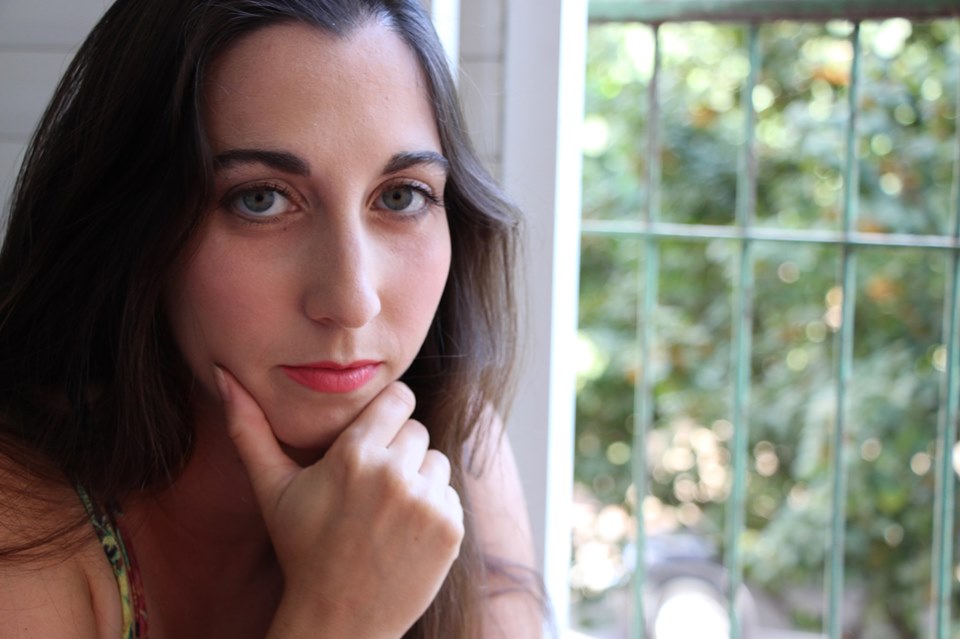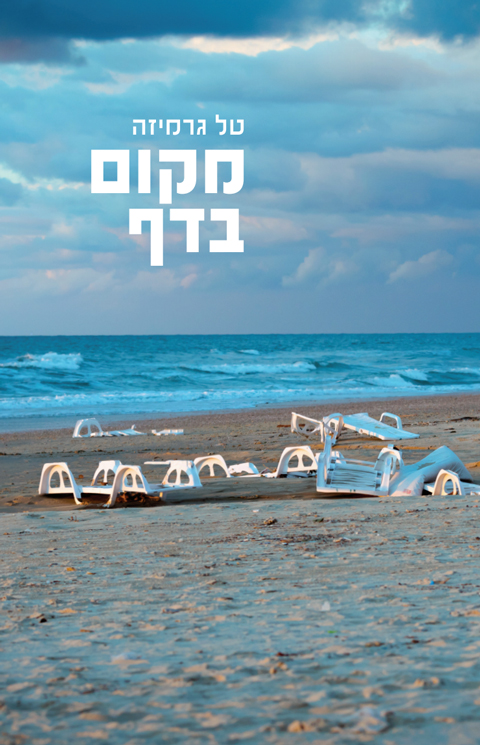
Tal Garmiza is an Israeli artist who creates in two different fields—writing poetry & dance. She started dancing when she was 4 and wrote her first poem when she was 9, and the world of creation feels like an extension of her ever since.
In the past few months she is exploring new platforms in which she can make her art more accessible to people, and one of them is ‘speaking’ her poems and recording them.

Some Space on a Blank Page
Tal Garmiza
Tell me about your writing and video process: schedule, environment, equipment, software, inspirations, etc.
Oh, it is hard to set a schedule for writing; if only it was that easy. Sometimes you have 10 different ideas per day and in others none. But, when you start publishing either written or recorded poems—and you do need to have high quality poems to publish in fixed times—you learn to search for ideas and poems in ways that inspire you: a word, sentences that people say, thoughts that go through your mind, dance (all kinds of sports are great for clear mind and creativity) or even music you love.
I will later on talk about my ‘theory’ of where you can ‘find’ poems, but the inspiration for me when I ‘speak out’ my poems comes from the words of the poem. They tell me how the poem should be read out, where to have a pause, where to be determined. Before the video was created, it was a written poem with words, telling a unique story of time and place, and of me.
Technically, the very first thing you need to do in order to record is to get a good video camera with a microphone and stand. It’s time to step away from you cell phones—the result just won’t be good enough. I can only advise you to film videos with a bright background around you, standing up, in a place where the viewer can understand your words, and always do a few shots because you never know which one might be the magical one!
For editing, every simple movie editing software could work, because you need to remember that your goal is to get the message through and not be a video photographer.
I make sure that I film and publish one poem in Hebrew and one in English per week.
Walk me through your publishing process from written to spoken product, and marketing that you do as the artist.
I publish in a few different platforms: I publish written poetry in Hebrew & English via Facebook and Instagram. These are two platforms in which I publish almost everything I write. When I choose poems for a poetry book (I published a first poetry book in Hebrew two years ago) and for open calls, I choose the ones I feel have a story that shines out from within them. When I record videos, I choose again, because now I must choose poems that make sense when you speak them out and publish on my Facebook page, Instagram and YouTube.
The technological world we live in today allows us to publish our creation in various accessible ways, which is great. Having said that—because you can find so many things online today, you need to make sure that your creation stands out, that you know your own voice, and that you have a professional product to give your audience, within understandable limitations of course.
If you work with social media—decide on fixed days on which you publish new things; apply for open calls; read your stuff on poetry nights—do everything you can to make sure that your creations don’t stay in the drawer; and if you can afford to fund this—consult with social media experts and do some promotion. In the marketing department, all of us artists need some help
Talk about your support system online and IRL, especially your biggest cheerleaders.
My parents are by far the biggest supporters I have! They come to every poetry event and every dance performance, and they never told me that my dreams are too crazy, or that creating is a waste of time. After every event they ask me: So what will you be presenting next? It’s a huge drive to create.
My friends are also amazing cheerleaders and you might be surprised, but the cheerleaders will appear as you keep pushing forward your art, believe in it and stand behind it. Remember that poetry touches very sensitive human feelings, so some people will read and watch everything and won’t say a thing; and some will come to you quietly one day and will say: ‘I follow what you do and that last poem—I felt it.’
How does life influence your poetry and vice versa? Your presentation is intense, riveting; how did you come to the decision to produce spoke word poetry?
I feel that poems already exist in the world. As a poet, what you need to do before you write them, is to find them; and they wait inside and outside and between people, in the moments between the moments, on the way home, late at night, in the questions that are waiting to be asked and between the lines. They are waiting to be revealed and to be written. I can say that, weirdly enough, I write many of my poems on the bus on the way to somewhere.
I use a clean language, but with very accessible down to earth words, and I feel that with time I came to realize that fewer words sometimes say much more. Since my first language is Hebrew, it definitely takes more effort in English, but I think it’s the same in every language.
I wanted people to start making the connection between my words and the person standing behind it—I was ready. I wanted to reach more people that might be in need of some poems and the need for someone else to speak their emotions and their experiences for them. I knew that this would be a good reach out to them. The right poem at the right times makes you feel that somewhere out there there’s someone who understands you. It’s happening to others as well.
I believe that poetry should be spread out to people, because a poem in a very few words contains so much of the human experience, that it might just remind us things about ourselves and about the world that we almost forgot.
What do you love most about your creativity?
Its very existence.
Connect with Tal:
Facebook: https://www.facebook.com/talpoetry/
YouTube: https://www.youtube.com/channel/UCN3brcgXEIjosMVF1Evn3jg
Instagram: https://www.instagram.com/talgarmiza/